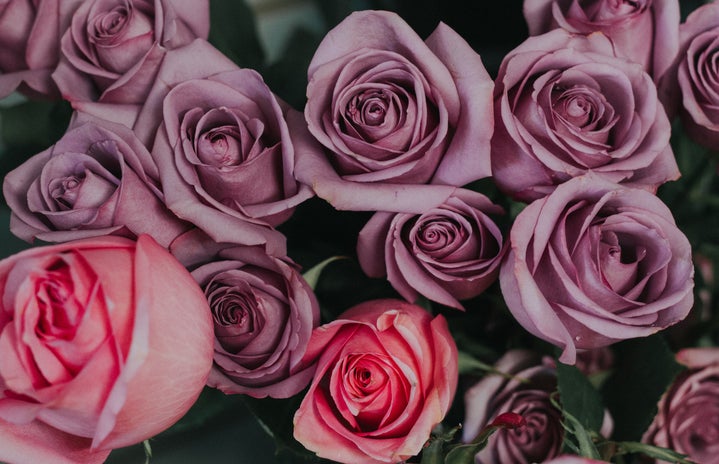With my insistence that our social media should have a cottage-core aspect to its aesthetic, I feel that I have let this topic go unaddressed for too long. Gardening is a little bit of a hot button issue in my world and my opinions lean on the more controversial side.
Before I get started, I just want to set the stage: the opinions discussed in this article zero in on criticizing suburban copy-and-paste grass lawns with bushes right up against the house. Foreign gardening techniques, such as Persian or Italian traditions, are completely excluded from this discussion because they relate more closely to American parks than the private gardens of the standard American.
Of course, these are just my opinions no matter how correct I think they are yet I hope that you come to agree with me. Without further ado, here are my controversial gardening opinions:
Grass is Ass
It was difficult deciding where to start; however, the great big eyesore that is grass lawns won. Grass lawns are a monotonous swath of green guarding the home. It is not dynamic or interesting, just a flat shade. The species of grasses used for lawns have been bred this way, to be a consistent shade and flat against the earth. This genetically engineered lawn ornament is not good for the environment! Not only do these grasses deposit nitrates into the soil, but they also reflect heat back into the atmosphere because they are typically kept so short which contributes to our climate crisis. Not only are flat grass lawns ugly aesthetically, but also in their effects on the climate.
What should be planted instead, you ask? Well! I have options. First, if you must have grass, is native grasses to your area. Native grasses are distinguishable by their longer blades, little rolling mounds, and more muted shades of green and brown which in my opinion provides a better, perhaps less distracting, backdrop for flowers and other plants in the garden. Alternatives to grass are moss and clovers. Moss is sturdy, does not require much attention, and makes a soft cushion for at home picnics. The problem is that moss requires shade so it is not perfect for everyone. My favorite is clover lawns. All you have to do is toss the seeds over your run of the mill grass lawn and it will flourish. The clovers will also trap heat, cooling your home and the atmosphere.
Mulch? No thanks.
I have no idea what is possessing people to cover their yards with mulch instead of grass. Remember how much I hate grass? Well, I’d rather grass over mulch. Maybe it’s because here in California mulch is paired with succulents spaced out with enough room to grow. The brown mulch with sporadic spots of succulents almost angers me; I can’t handle it. Get rid of it, please, and use clovers or moss like I mentioned above.
Move that hedge!
I’m not going to lie, I hate bushes that have nothing going on for them. Other cultures have rich traditions related to bushes, yet Americans remain uninspired with bush design. If you’re going to have a plain, green bush that has no flowers, do something with it! Shape it into something other than a bulbous overgrowth protruding from your home. And on that note, pull them away from your house! I don’t know what it is, but bushes right up against the home bothers me. It invites wildlife and insects to hide right up close to you, perhaps wiggling their way in to hang out with you.
If you must have a green bush, and I am including hedges in between houses in this, do something nice with it; however, it is my recommendation to not only replace your drab bushes with something that flowers and has a bit of color, but to also to have your bushes away from the house. Bushes are nature’s fence and will provide a beautiful privacy screen if you use them to replace a not-so-natural fence.
No colonizers.
Okay, so invasive plants are a huge problem. They are colonizers that are destructive to any ecosystem that they invade so please research plants before you buy and introduce them to your community. It is also helpful to research because sometimes you’ll find a plant that is beautiful but just won’t grow because it is not meant to live in your climate! Native species will grow best and attract pollinators. Maybe you’ll find some butterfly friends!
That flower bomb bombed ?
On the thread of native plants, flower bombing has been a trend on TikTok for the past few months. This is where people visit empty lots and spread seeds from little wildflower mix packets. Flower bombing has sprung off of the huge cottage-core surge that has coincided with the pandemic; however, I am seeing a few issues with the practice.
Just because the package says it is wildflowers doesn’t mean that the flowers are wild, or native, to your area. You have to make sure you are not introducing an invasive species into the area. This can be catastrophic and ruin an entire ecosystem, killing animals and insects as well as other plants. Additionally, just because a lot is empty doesn’t mean it’s not owned by anyone. Public or private or on the market, the owner of the lot that you are flower-bombing could just pull up the wildflowers you planted and undo all of your work. For all of these reasons, I’m not really a fan of flower-bombing.


